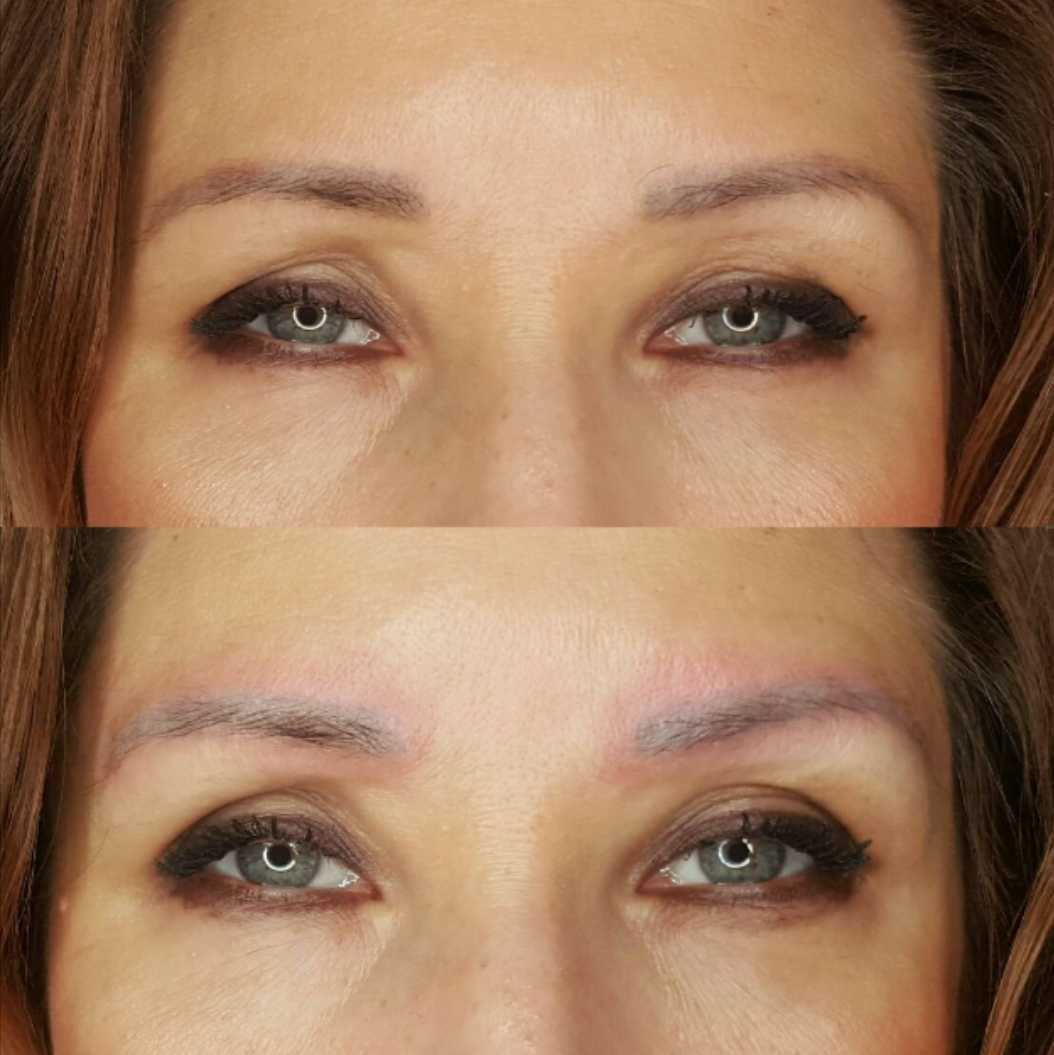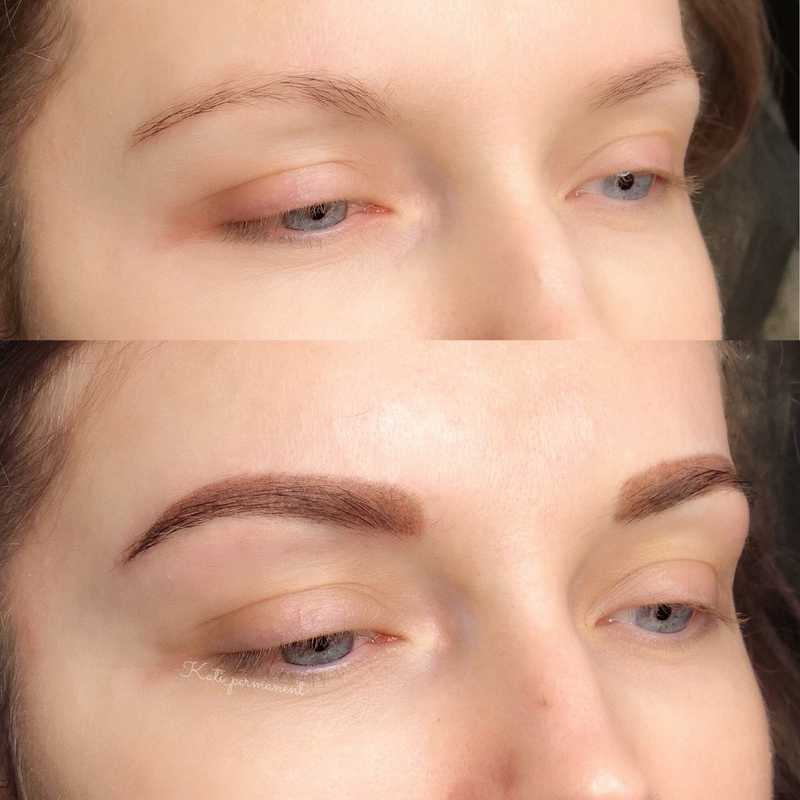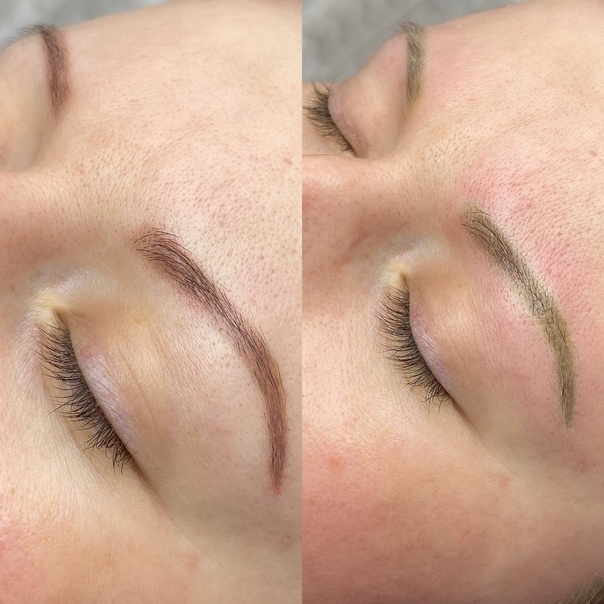While tattoos are a popular form of self-expression, there may come a time when someone wishes to remove one for personal or professional reasons. Traditional methods such as laser removal, dermabrasion, or surgical excision have been the go-to solutions for many years. However, an alternative, known as saline eyebrow tattoo removal, is becoming increasingly popular. This method is reputed to be less invasive and friendlier to the skin. In this article, we’ll delve deeper into saline tattoo removal, uncovering the process, the benefits, and the considerations one needs to be aware of before undergoing this treatment.
Understanding saline tattoo removal

Saline tattoo removal is a procedure that involves applying a specialized saline solution onto the tattooed area. The solution works by penetrating the skin and bonding with the tattoo ink particles. This combination of saline and ink is then slowly drawn out to the skin’s surface and expelled as the skin naturally heals and scabs over. This process is less harsh than other removal methods, making it a favorable option for many.
The procedure of saline tattoo removal

During the initial consultation, the tattoo removal expert will evaluate your tattoo to determine if saline removal is a suitable option for you. Factors such as the age of the tattoo, the depth of ink, color, and your skin type will be considered. It’s also the perfect opportunity to ask any questions and express any concerns you might have about the procedure.
The saline tattoo removal session
A typical saline tattoo removal session begins with cleaning the area and then applying a local anesthetic to reduce discomfort. The technician will then use a device akin to a tattoo gun to puncture the skin and apply the saline solution. Once the session is complete, they will guide you through the healing process and give aftercare instructions to ensure the best results for your skin.
Number of sessions and factors involved
The number of sessions needed for saline tattoo removal can vary. Certain factors play a significant role in determining how many treatments you will need. These include the tattoo’s size, the ink’s color and density, your skin type, and your body’s ability to heal. A detailed plan will be outlined during your consultation.
Advantages of saline tattoo removal
Saline eyebrow tattoo removal is minimally invasive compared to other techniques like laser removal, which can be more aggressive on the skin. The saline method uses a gentle extracting process to draw out the pigment rather than breaking it down with intense light or physical abrasion, offering a softer approach to removal.
Lower risk of scarring
One of the benefits of saline tattoo removal is the lower risk of scarring. The method’s approach to drawing out the ink favors the body’s natural healing process, which is instrumental in reducing the likelihood of lasting scars, making it an ideal choice for those with sensitive skin or a low tolerance for invasive treatments.
Efficacy on older tattoos and pigment fading
Saline tattoo removal is especially efficient on older tattoos and is effective in fading pigments that have settled over time. While some colors can be stubborn, the saline method has proven to have a good success rate with a range of pigments, particularly those that are traditionally difficult to remove.
Potential limitations and considerations
While saline tattoo removal is an effective option, it may not be suitable for all skin types. Due to individual differences in skin sensitivity and healing capabilities, it’s crucial to consult with a professional to understand how your skin might react to the treatment and what kind of results you can realistically expect.
Possible side effects
As with any cosmetic procedure, saline tattoo removal can come with potential side effects, such as redness, swelling, and changes in skin pigmentation. These reactions are typically temporary and subside as the skin heals. A thorough consultation can identify any specific risks based on your skin’s condition.
Comparing saline tattoo removal to other methods
It’s important to weigh all options when considering tattoo removal. Saline eyebrow tattoo removal stands out for being less invasive with fewer side effects. However, other techniques might be better suited to certain tattoos or skin types.
| Method | Invasiveness | Effectiveness | Side Effects |
|---|---|---|---|
| Saline | Low | Moderate – High | Minimal |
| Laser | Moderate | High | Moderate – High |
| Dermabrasion | High | Moderate | High |
| Surgical Excision | Very High | Guaranteed | High (with scarring) |
Preparing for your saline tattoo removal
Prior to opting for saline tattoo removal, seeking professional medical advice is crucial. A qualified professional will provide you with a realistic outlook on the procedure’s effectiveness for your particular case, helping to set proper expectations and ensure that the process is safe for you.
Pre-treatment care instructions
To prepare for a successful saline tattoo removal session, there are certain steps you should take. This preparation is essential for achieving the best possible outcome and for your skin’s prompt recovery.
- Avoid sun exposure to the tattooed area for a few weeks before the session.
- Keep the tattooed area clean and free of lotion, makeup, or other cosmetic products on the day of treatment.
Post-treatment aftercare
Aftercare is a vital part of the removal process. Proper care following your session can greatly influence the healing process and the overall results of the treatment.
- Apply any recommended ointments or bandages as instructed by your technician.
- Avoid picking at the scab that forms, as this can interfere with the healing process and effectiveness of the treatment.
- Keep the area dry and follow any specific bathing or showering instructions provided to you.
Conclusion
Saline eyebrow tattoo removal has emerged as a noteworthy and gentler alternative to traditional tattoo removal methods. Its non-invasive nature, coupled with a lower risk of scarring and effectiveness, has made it an increasingly popular choice. As with any cosmetic procedure, it’s paramount to consult with skilled professionals who can guide you through the process and help you understand what results to expect. Bear in mind that individual results can vary, and multiple sessions could be necessary to achieve your desired outcome.
FAQs
Q1: Is saline tattoo removal painful?
A1: The discomfort associated with saline tattoo removal is typically minimal and can be compared to the sensation experienced when getting the tattoo. However, individual pain thresholds vary, and a local anesthetic can be applied to alleviate discomfort.
Q2: How long does it take to see results from saline tattoo removal?
A2: Results can often be seen after several treatments, but the exact timeline varies depending on factors such as tattoo age, color, size, and the individual’s skin reaction. A consultation with a professional can give a more accurate timeframe.
Q3: Can saline tattoo removal completely erase a tattoo?
A3: While saline tattoo removal can significantly fade a tattoo, complete erasure is not guaranteed. Success rates vary based on the tattoo and how it responds to treatment.
Q4: Are there any scars left after saline tattoo removal?
A4: Saline tattoo removal generally has a lower risk of scarring. Proper aftercare is crucial to minimize any potential for scarring.
Q5: How much does saline tattoo removal cost?
A5: The cost of saline tattoo removal is variable and depends on multiple factors, including the size and complexity of the tattoo and the number of sessions required. Professionals typically provide cost estimates during the initial consultation.
